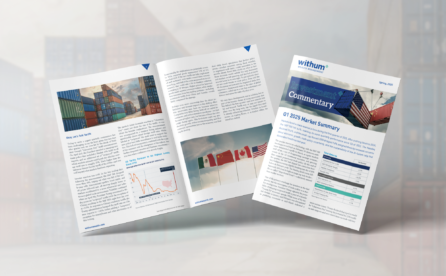Last week’s decision by the Federal Reserve to cut the federal funds rate by 50 basis points marks a significant moment in the central banks’ continual effort to manage the U.S. economy’s trajectory. This move reduced the benchmark rate to a range between 4.75% and 5%, positioning the Fed into a new phase of monetary policy. While rate cuts typically aim to stimulate growth in times of crisis, we caution against reading into the magnitude of this cut and whether it reflects concerns that go beyond merely fine-tuning inflation control.
Historically, the Federal Reserve has employed rate cuts during periods of economic strain, such as the dot-com bubble burst and the 2008 financial crisis. These past instances saw the Fed take aggressive measures to encourage borrowing and investment, with the hope of jumpstarting the economy. This rate cut also coincided with heightened concerns about the labor market and broader economic conditions. The Fed’s focus, as emphasized by Chair Jerome Powell, has shifted toward ensuring that the labor market remains resilient while avoiding the potentially negative consequences of past rate increases by keeping the cost of capital too high for too long.
While some had expected just a 25-basis-point reduction, the larger cut suggests the Fed is more sensitive to weak data and more concerned about any potential weaknesses in the labor market than previously understood. As several experts have noted, the Fed’s decision can be seen as a form of “risk management,” providing insurance against an unexpected downturn. By acting boldly now, the Fed hopes to prevent a mild cooling of the labor market from spiraling into more significant job losses. Data shows that while the unemployment rate has risen, this can be attributed to the labor supply (number of people looking for work) increasing rather than companies reducing the workforce in preparation for worse times ahead.
One critical distinction in the current cycle is the role of inflation, which has been steadily falling from its 40-year highs last year. Unlike past inflationary periods, this decline is driven by factors like improving supply chains and a stabilized labor force. With inflation receding, the pressure to keep rates high has lessened, giving the Fed more flexibility to focus on maintaining economic stability without risking further damage to growth prospects. Today’s economy looks more like the continued economic expansion of 1995 than economic peaks in 2000 or 2007.
Moreover, this rate cut highlights the delicate balance the Fed is attempting to strike between ensuring economic resilience and avoiding a hard landing. With hiring slowing and unemployment edging higher, the Fed’s goal is to ease the financial burden on businesses and consumers while keeping inflation in check. Powell’s comments underline the Fed’s commitment to maintaining flexibility and responding to evolving data, rather than sticking rigidly to a predetermined course.
Unlike previous cycles, today’s rate cuts are happening in a context where financial markets are not showing signs of extreme stress, nor are there signs of bursting asset bubbles. Instead, the Fed’s action seems more preemptive, aiming to keep the economy on a stable path amid a gradually cooling labor market and slowing inflation.
While the 50-basis-point cut follows historical trends, the unique economic conditions of today—ranging from lingering post-pandemic effects to shifting global supply chains— seem to set this rate-cutting cycle apart. Historically, the stock market has performed well following a rate cut so long as no recession follows within the next 12 months. Investors and consumers should pay close attention to how these developments unfold, as the effects of these cuts will depend on the broader economic environment. For example, falling rates may lead to a weaker dollar and relative outperformance for foreign stocks. Lower rates also tend to favor domestically focused small-caps, which see outsized benefits from a lower cost of capital. Both the stock and bond markets will be keenly attuned to the Fed’s next steps, with much at stake as the central bank attempts to navigate the economy toward a soft landing.


